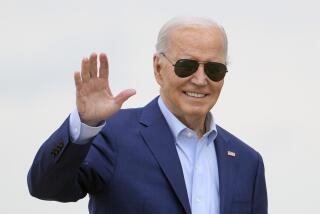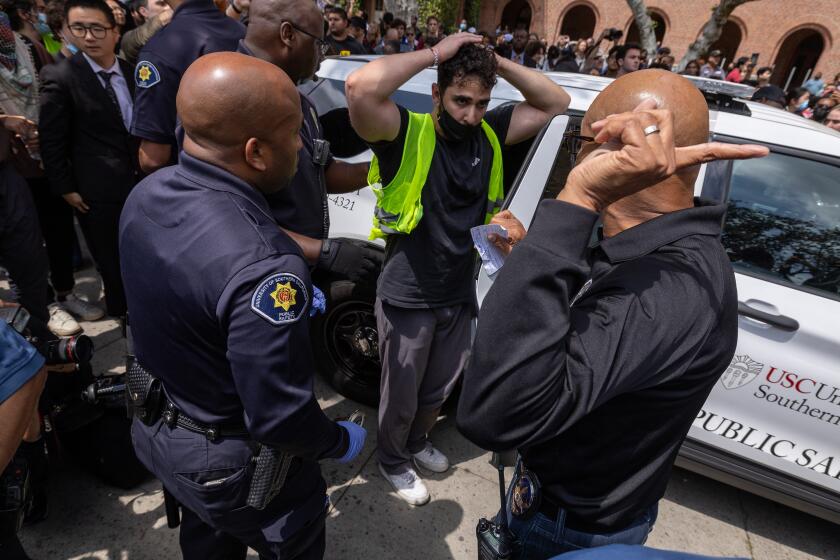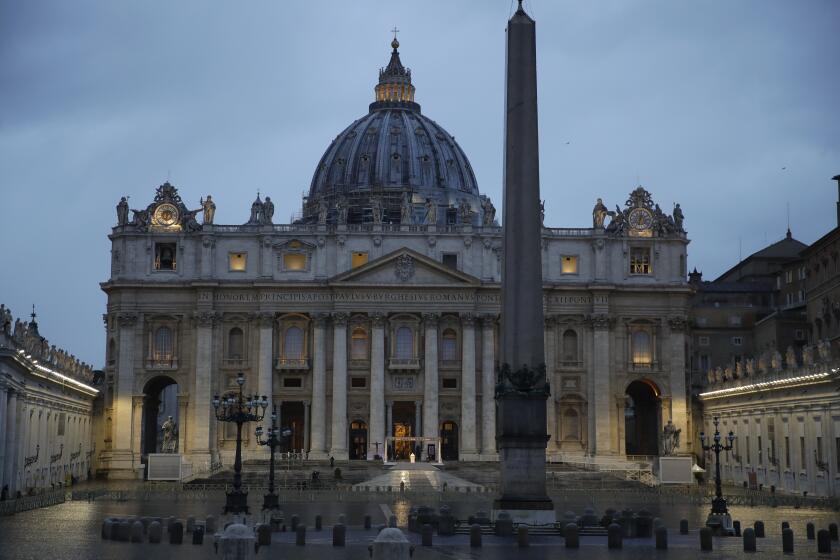Governor walks fiscal tightrope
In his State of the State address in Sacramento on Wednesday, Gov. Jerry Brown is expected to attempt a risky balancing act: reconciling his well-crafted image as a penny pincher with one he aspires to as a builder in the mold of his father, former Gov. Pat Brown.
Details of the speech are closely guarded. Brown’s aides say he wrote it himself and even his most trusted advisors haven’t seen it. But they expect the remarks to expand on themes the governor has sounded in recent weeks, calling for fiscal austerity while at the same time urging that billions be invested in public works.
Brown has continued to demand that lawmakers cut deeply into the state’s social safety net. He has simultaneously embraced an ambitious high-speed rail program whose price tag has ballooned since 2006, when voters agreed to pay for it. He has said Californians will have to choose between billions in new taxes next fall and cuts in public school funds -- but he also has advocated for a new multibillion-dollar water bond.
Brown will have to defend such long-term investments even as he pegs the budget deficit at more than $9 billion and state unemployment remains high. His administration says that’s not a contradiction.
“We built the Golden Gate Bridge and Central Valley Water Project during the Great Depression,” his spokesman, Gil Duran, said Tuesday. “We’re not trying to build the pyramids here. We’re trying to build the water and transportation infrastructure we need to guide us through the 21st century.”
To make his case Wednesday, the governor must persuade Californians that state finances remain precarious enough to require higher taxes but have stabilized enough to allow major public projects. He is expected to strike a markedly different tone from a year ago, when he urged bipartisan cooperation in the Capitol to address the state’s fiscal crisis.
After failing to break Sacramento’s persistent gridlock and gain Republican support for a tax hike to balance the budget, Brown and his fellow Democrats are preparing to turn to voters directly, planning to gather signatures for a November ballot measure that would temporarily raise levies on sales and upper incomes.
Immediately after the speech, Brown will take his message on the road with appearances in Los Angeles and Burbank on Wednesday and in Irvine and San Diego on Thursday.
He has already scaled back the size of his proposed tax increase and framed it as a choice between paying more for a while and cutting nearly $5 billion from schools. Opinion polls have shown voters consistently willing to pay more to improve their local schools, but opponents of Brown’s plan say he is holding students hostage to Californians’ willingness to follow through.
“That kind of ‘Washington Monument strategy’ of closing beloved parks or cutting funding to kids is typically what people do when they’re trying to scare the public,” said Sen. Sam Blakeslee (R-San Luis Obispo). “Unfortunately, the governor seems committed to this cynical approach.”
Brown will also have to persuade the Democrats who dominate the Legislature to keep cutting -- their leaders have already said no -- to show voters he’s taking other difficult steps to restore the state’s financial health.
“We’re in a box in the state of California,” Brown told reporters earlier this month. “We have more needs, desires and demands than the money available.”
Jack Pitney, professor of political science at Claremont McKenna College, said Brown’s calls for deeper cuts are of a piece with the pitch for higher taxes.
“The state is facing severe constraints,” Pitney said, “and politically he has to make some real cuts if he wants to have any political standing to ask for tax increases.”
Earlier this month, when he unveiled his proposed 2012-13 budget, Brown rejected suggestions that it pandered to voters.
“I’m not trying to kid anybody,” the governor said. “I’m just saying this is the best I can do. If [voters] don’t agree, then we’ll deal with that when it happens.”
--
Times staff writer Michael J. Mishak contributed to this report.
More to Read
Get the L.A. Times Politics newsletter
Deeply reported insights into legislation, politics and policy from Sacramento, Washington and beyond. In your inbox three times per week.
You may occasionally receive promotional content from the Los Angeles Times.






